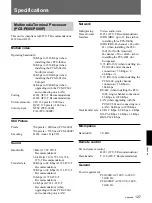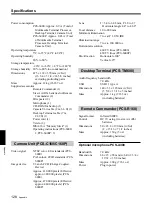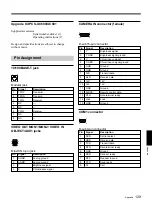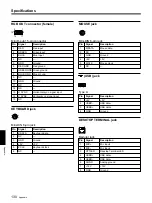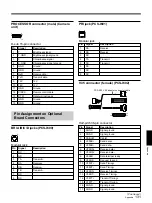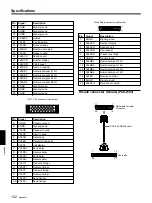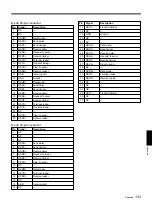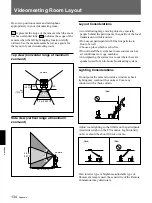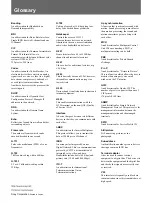
Glossary
Bonding
An abbreviation for Bandwidth on
Demand Interoperability.
BRI
An abbreviation for Basic Rate Interface.
Single ISDN has two B-channels and one
D-channel.
CIF
An abbreviation for Common Intermediate
Format. This format allows to
communicate with between different color
systems (NTSC or PAL).
352 pixels
×
288 lines
Codec
An abbreviation for Coder-Decoder. An
electronic device that converts an analog
signal (such as voice or video) to a digital
data stream, compresses it, and sends it
over a digital communications line.
Another codec reverses the process at the
receiving end.
DHCP
An abbreviation for Dynamic Host
Configuration Protocol. Manages IP
addresses in the network.
DNS
An abbreviation for Domain Name
System.
Echo
Reflection of sound from walls and other
surrounding objects.
Frame rate
The number of frames which can be
encoded/decoded in one second.
G.711
Pulse code modulation (PCM) of voice
frequencies.
G.722
7 kHz audio-coding within 64 Kbps.
G.723.1
5.3 or 6.3 kHz audio-coding within
32 Kbps.
G.728
Coding of speech at 16 Kbps using low-
delay code excited linear prediction.
Gatekeeper
Controls the access of H.323
videoconference devices on a network.
Administers the zone, access limitation,
audio/video bandwidth, and alias etc.
H.221
Frame structure for a 64 to 1920 Kbps
channel in audiovisual teleservices.
H.261
Video codec for audiovisual services as p
×
64 Kbps.
H.263
This is basically based on H.261, however,
this enables communication using via a
lower bit rate.
H.320
Narrow-band visual telephone systems and
terminal equipment.
H.323
This enables communications with the
H.320 terminal on the non-QOS (Quality
of Service) LAN.
Interface
A device that goes between two different
devices so that they can communicate with
each other.
I-MUX
An abbreviation for Inverse Multiplexer.
This protocol allows you to transmit the
data at 384 Kbps via 6B-channel.
ISDN
An acronym for Integrated Services
Digital Network. This is a communications
protocol by CCITT on transmission of
integrated voice, video, and data.
Bandwidths include basic (64 Kbps) and
primary rate (1.544 and 2.048 Mbps).
ITU-T
An abbreviation for International
Telecommunication Union,
Telecommunications.
Lip synchronization
A function that synchronizes sound with
motion. Sound processing is much faster
than motion processing, thus sound and
motion sometimes get out of step with
each other.
MCU
An abbreviation for Multipoint Control
Unit. When connecting a MCU, a
multipoints meeting can be held.
PBX
An abbreviation for Private Branch
eXchange.
P in P
An abbreviation for “Picture in Picture.”
This is a function which allows the user, to
monitor their own party on a small
window on the TV monitor.
QCIF
An abbreviation for Quater CIF. The
number of pixels is a quarter than one of
CIF format.
176 pixels ¥ 144 lines
SNMP
An abbreviation for Simple Network
Management Protocol. This protocol is for
management information between the
management station and the managed
terminals.
SPID
An abbreviation for Service Profile ID.
Still picture
Still, unmoving pictures, as in a
photograph.
Sub-address
An identification number given to devices
sharing a common ISDN line .
Terminal adaptor
A device used to connect various
equipment to a digital line. The device sits
between the equipment and the digital line
and checks that signals are correctly sent
or received.
V.35
This interface is frequently used for data
communication since this transmits data at
high speed.
Sony Corporation
Printed in Japan






